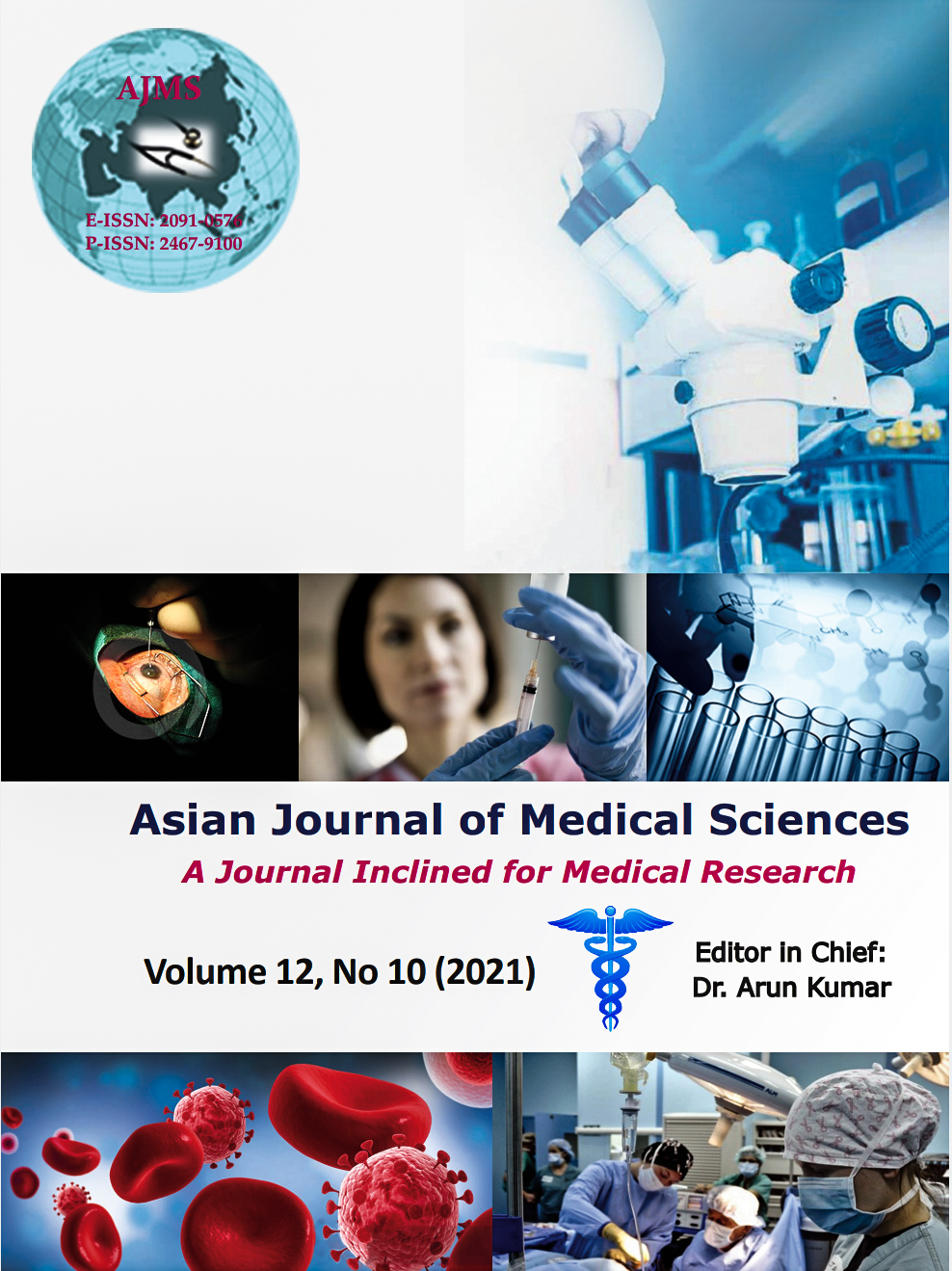Japanese encephalitis in children from an endemic district of West Bengal, India: A hospital based observational study
Keywords:
Japanese encephalitis, Children, West BengalAbstract
Background: Japanese encephalitis (JE) is an important cause of viral encephalitis in children in South East Asian countries including India.
Aims and Objective: We have done this study in an JE endemic district of India to know the demographic profile, clinical presentation, seasonal variation, outcome and about the vaccination status of the JE cases.
Materials and Methods: This observational, cross sectional study was done for a period of one year in the Pediatric department of Burdwan Medical College, West Bengal in children up to the age of 12 year, presented with acute encephalitis syndrome (AES). Demographic data, clinical presentation and JE vaccination status were recorded and confirmed JE cases were detected by either serum or CSF JE IgM antibody. Outcome of the JE cases were noted as discharge, death or leave against medical advice (LAMA).
Results: We have found confirmed JE in 18 children out of total 125 AES cases (14.4%). 61.1% of them were within 6 to 12 year age, mostly from low socioeconomic status and 100% case occurred during monsoon and post monsoon period. History, was of JE vaccination were present in only 11.1% case of JE. Most common presenting symptoms were high fever (100%), convulsion (94.4%) and altered sensorium (72.2%). 77.8% JE case were discharged and 11.1% expired.
Conclusion: We must consider JE whenever a child from any endemic district comes with AES and we should try to bring every child under the JE vaccination coverage in the endemic regions globally to reduce the burden of this preventable encephalitis.
Downloads
Downloads
Published
How to Cite
Issue
Section
License
Copyright (c) 2021 Asian Journal of Medical Sciences

This work is licensed under a Creative Commons Attribution-NonCommercial 4.0 International License.
Authors who publish with this journal agree to the following terms:
- The journal holds copyright and publishes the work under a Creative Commons CC-BY-NC license that permits use, distribution and reprduction in any medium, provided the original work is properly cited and is not used for commercial purposes. The journal should be recognised as the original publisher of this work.
- Authors are able to enter into separate, additional contractual arrangements for the non-exclusive distribution of the journal's published version of the work (e.g., post it to an institutional repository or publish it in a book), with an acknowledgement of its initial publication in this journal.
- Authors are permitted and encouraged to post their work online (e.g., in institutional repositories or on their website) prior to and during the submission process, as it can lead to productive exchanges, as well as earlier and greater citation of published work (See The Effect of Open Access).




